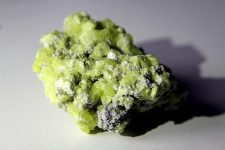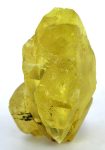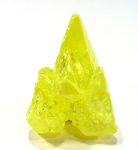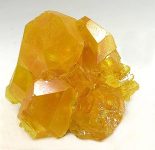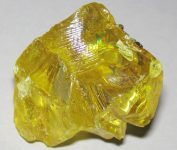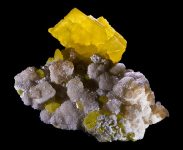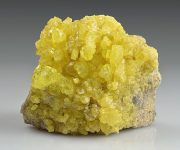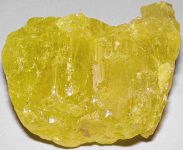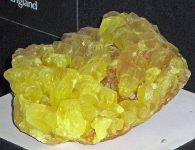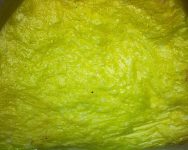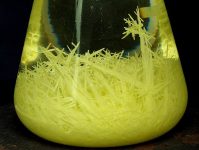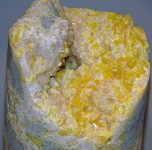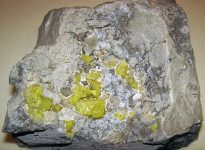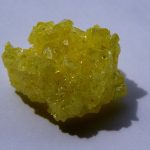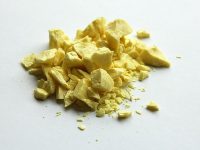Sulfur
ABOUT SULFUR
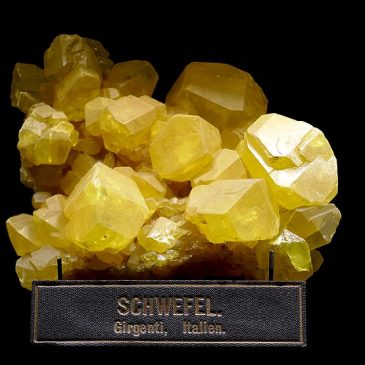
About: Sulfur is a widely known and versatile element with significant industrial, biological, and environmental importance. Recognizable by its bright yellow color and distinct odor, sulfur has been utilized by humans for thousands of years in various applications. This guide provides an in-depth look at sulfur’s characteristics, history, sources, uses, and significance.
Mining: Sulfur is extracted through various methods, including mining sulfur deposits, recovering sulfur from oil and gas refining, and processing sulfur-containing ores. In volcanic regions, sulfur is often mined from fumaroles and hot springs.
Processing: Extracted sulfur is purified through various processes, including distillation and crystallization. The purified sulfur is then used to produce sulfuric acid and other sulfur compounds.
CHARACTERISTICS
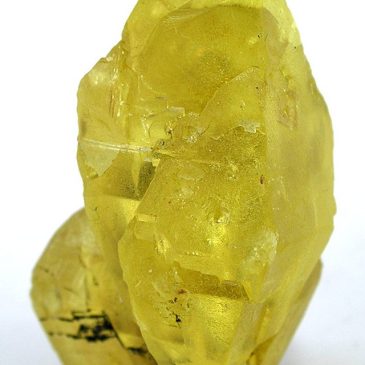
Color: Sulfur is typically bright yellow, although it can appear in various shades of yellow and sometimes brown.
Chemical Composition: Sulfur is a chemical element with the symbol S and atomic number 16.
Density: Sulfur has a density of about 2.07 g/cm³, making it relatively light.
Crystal Structure: Sulfur crystallizes in the orthorhombic system at room temperature, forming needle-like crystals. At higher temperatures, it forms monoclinic crystals.
Luster: Sulfur has a resinous to greasy luster, giving it a somewhat shiny appearance.
Hardness: Sulfur has a Mohs hardness of 1.5 to 2.5, making it quite soft and easily scratched.
Odor: Sulfur itself is odorless, but its compounds, such as hydrogen sulfide (H₂S) and sulfur dioxide (SO₂), are known for their characteristic foul odors.
HISTORY AND LORE
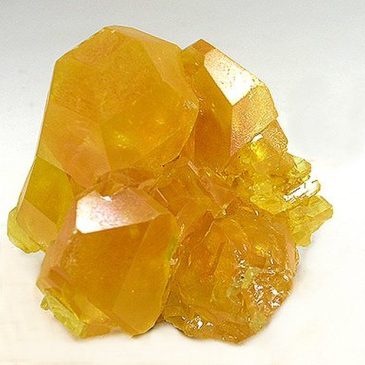
Ancient Civilizations: Sulfur has been known since ancient times. It was used by the Egyptians for medicinal purposes and in religious rituals. The Greeks and Romans used it for fumigation and as a component in early gunpowder.
Middle Ages: During the Middle Ages, sulfur was used in alchemy and early chemistry. It was also a key ingredient in black powder, used for mining and military purposes.
Modern Era: Today, sulfur is essential in numerous industrial processes, including the production of sulfuric acid, fertilizers, and chemicals. It is also important in pharmaceuticals and agriculture.
SOURCES
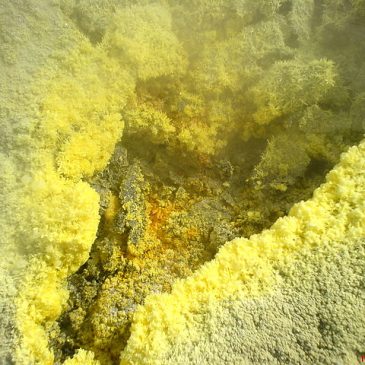
Geographical Locations: Major sulfur-producing countries include China, the United States, Russia, Saudi Arabia, and Canada. Significant deposits are found in volcanic regions and salt domes.
Geological Formation: Sulfur is commonly found near volcanic vents and hot springs, often associated with minerals such as gypsum, halite, and calcite. It is also extracted from sulfur-containing minerals like pyrite and galena and as a byproduct of refining fossil fuels.
USES
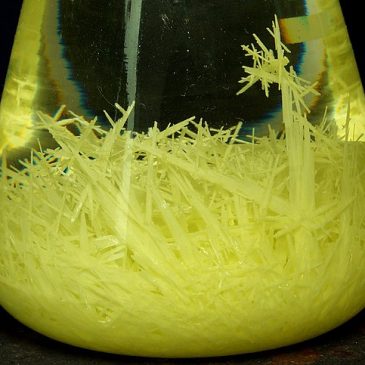
Industrial Applications: Sulfur has numerous industrial uses:
- Sulfuric Acid Production: The most significant use of sulfur is in producing sulfuric acid, one of the most important industrial chemicals. Sulfuric acid is used in fertilizer manufacturing, chemical synthesis, and petroleum refining.
- Fertilizers: Sulfur is a key component in fertilizers, essential for plant growth and soil health.
- Chemical Manufacturing: Sulfur is used to produce various chemicals, including sulfur dioxide, sulfur hexafluoride, and sulfur chlorides, used in multiple industrial processes.
Pharmaceuticals: Sulfur is used in pharmaceuticals and personal care products, particularly in treating skin conditions like acne and eczema. It has antimicrobial properties that make it effective in treating certain infections.
Agriculture: Elemental sulfur is used as a pesticide and fungicide in agriculture. It helps control pests and diseases in crops and is also used to acidify alkaline soils.
Metallurgy: Sulfur is used in the vulcanization of rubber, a process that improves the elasticity and durability of rubber products. It is also used in the manufacture of steel and other metals.
CULTURAL AND SYMBOLISM
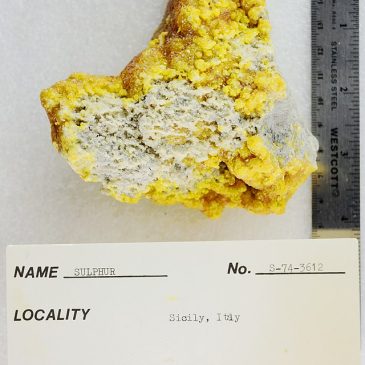
Symbol of Fire and Brimstone: In many cultures, sulfur is associated with fire and brimstone, often symbolizing destruction and purification. It is mentioned in religious texts as a component of hellfire.
Historical Usage: The use of sulfur in gunpowder highlights its historical significance in warfare and mining. It was also used in ancient fumigation practices to purify and disinfect.
